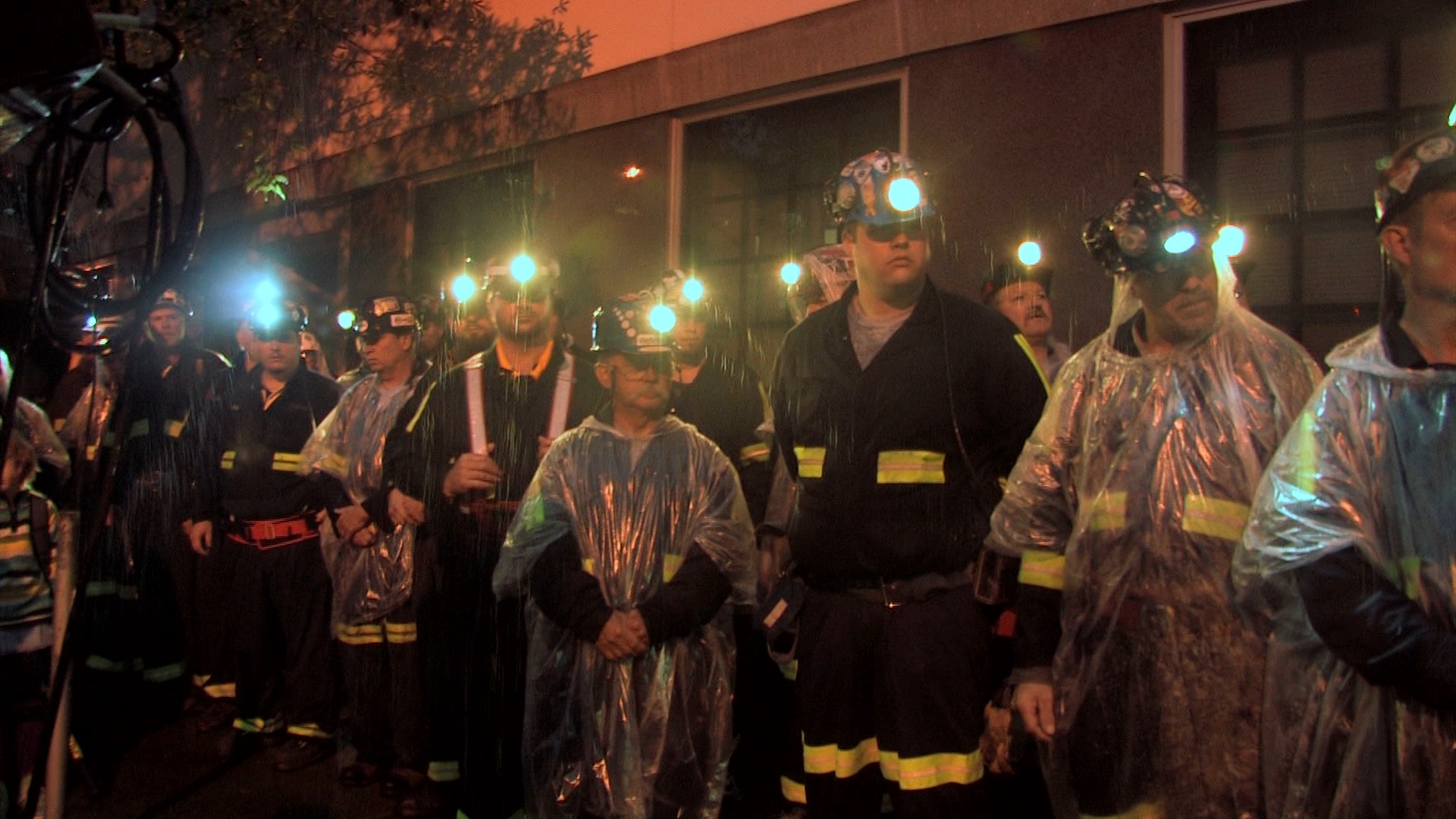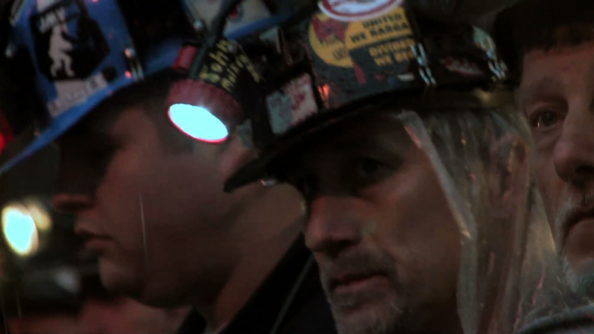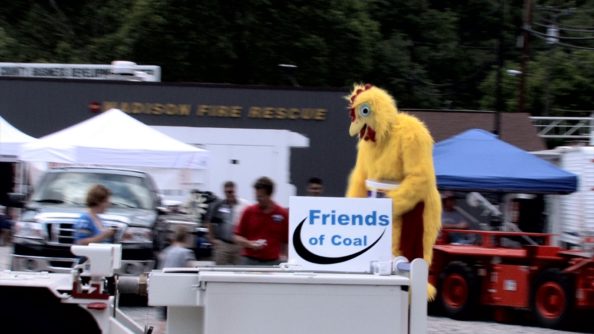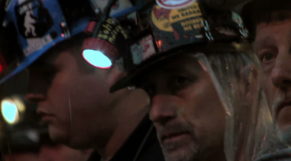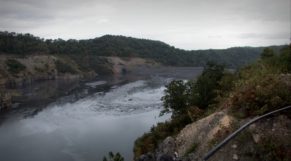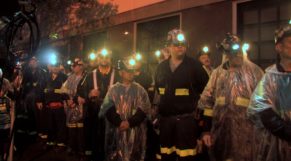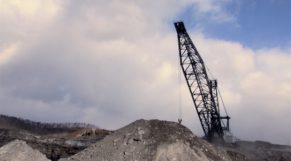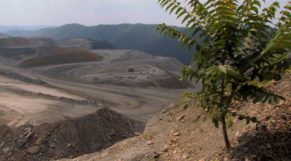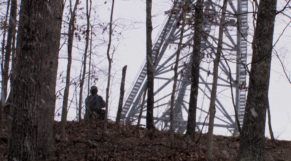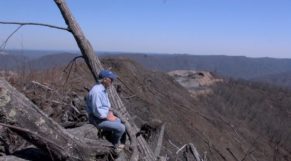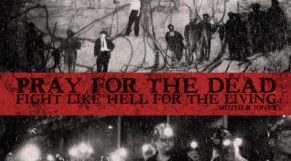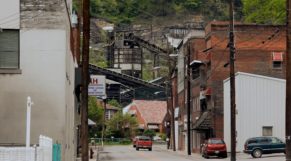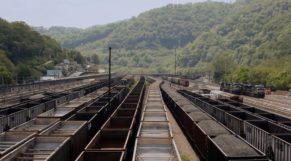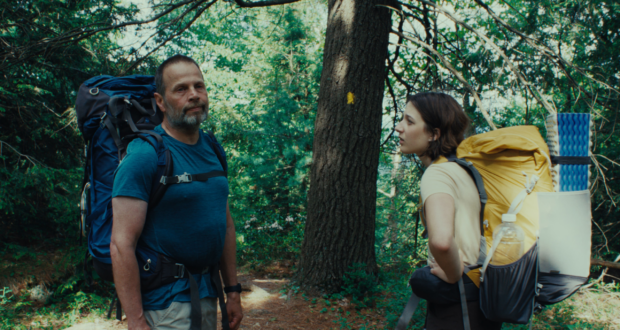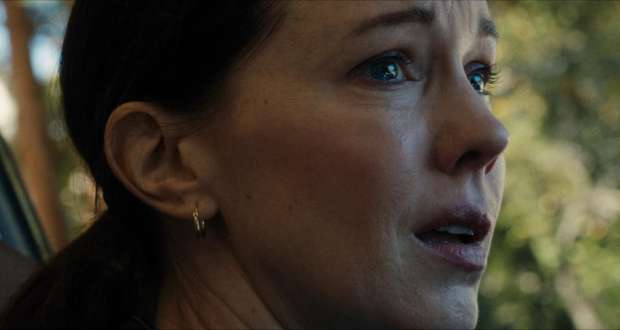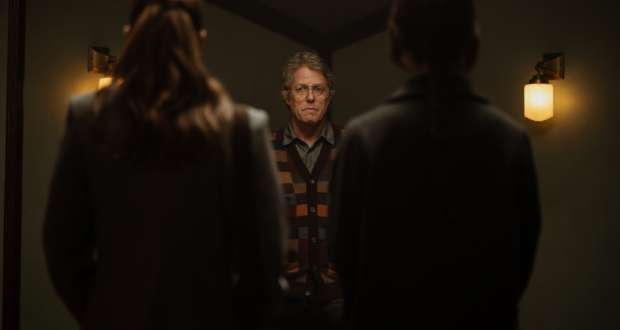Blood on the Mountain
Genre: feature-length documentary
Length: 90 minutes
Director: Mari-Lynn Evans and Jordan Freeman
Producers: Deborah Wallace, Mari-Lynn Evans and Jordan Freeman
Release date: November 18, 2016 from Abramorama
Reviewed by: Connie Wilson
The opening scenes from the impressive documentary “Blood on the Mountain” show the beautiful forested hills of Appalachian coal country from the air. West Virginia, second in the nation in coal production (and second poorest state in the nation), looks beautiful from hundreds of feet overhead.
And then we go to ground and reality rears its ugly head.
A litany of mining disasters is listed: Hawks Nest, West Virginia: 764 African-Americans in unmarked graves with 10 to 14 dying in the mine(s) daily.
- The conflict at Blair Mountain.
- Buffalo Creek (125 killed, 4,000 homeless, engulfed 17 towns with coal slurry).
- Brushy Fork Slurry: 9 billion gallons of coal slurry released to bury nearby towns.
- 52 dead under Donald Blankenship’s Massey Energy.
- Sago Mine Explosion, Jan. 2, 2006.
- Aracoma Mountain Fire, in 2000, 2 dead.
- Upper Big Branch Explosion, April, 2005, in the #9 mine. Seventy-nine went in; 50 came out—“the worst explosion since 1984”—29 dead,’
And yet Don Blankenship’s (Massey CEO) e-mail, read into the Congressional record during the post-disaster investigation, said: “You need to ignore them (federal rules and regulations) and run coal.”
Anyone who wants to know what a mine that is trying to evade regulatory efforts might resemble need only take in Antonio Banderas’ 2015 film “The 33” about gold and copper miners trapped underground in Chile for 69 days before rescue (Banderas played Mario Sepulveda, the group’s leader). The precious metal may be different, but the methods to avoid ensuring the health and safety of the mine workers comes very close to coal mining in 2016. Any time a federal regulator was on the way to make an inspection, the word was put out; efforts were made to avoid detection/correction of any infractions of rules put in place to safeguard the health and safety of the workers.
THE GOOD:
Blood on the Mountain starts with a brief history of the rise of coal at the end of the 19th century. Because of the abuse of workers, unions began to form to fight for the rights of the working man. (Sylvester Stallone’s 1978 film “F.I.S.T.”, for which I attended the World Premiere, was about the fight to unionize in the face of brutal opposition from management). A voice onscreen says, “That’s how we got the New Deal.” FDR in a Fireside Chat is shown telling the nation that government should “seek the primary good of the greater number.” Between 1935 and 1938 Roosevelt championed the New Labor Act and the Fair Labor Act and progress was made.
But the demand for coal as a cheap energy source peaked in the 1920’s and there are only 500 mines left in the United States today.
Of that number, those in Wyoming are far and away the biggest producers of coal (4x more than West Virginia), but West Virginia, long associated with coal mining, is second. It is also the second poorest state in the Union.
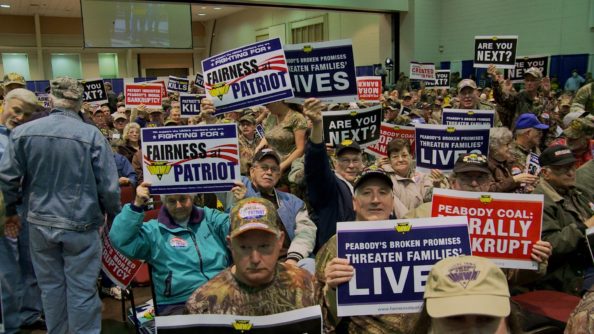 Once the heady days of the passage of Fair Labor Acts were past, Homer Adam Holt, Governor of West Virginia in 1939, tried to amend educational literature in the schools to make it more to his liking. Changing history by writing it to the Governor’s liking was recommended by those in power this way, “It is better to have a mediocre book than to antagonize the Governor.” Corrupt governors abounded before and after Holt.
Once the heady days of the passage of Fair Labor Acts were past, Homer Adam Holt, Governor of West Virginia in 1939, tried to amend educational literature in the schools to make it more to his liking. Changing history by writing it to the Governor’s liking was recommended by those in power this way, “It is better to have a mediocre book than to antagonize the Governor.” Corrupt governors abounded before and after Holt.
The comment, prescient and predictive today, is made that “industrialists have been able to get along whatever they want” and, as the documentary attests, “there were a continuous stream of accidents and treatment of others as less important” but those in power. (*Recent Reference: “Deep Horizon” Mark Wahlberg film about the BP catastrophe in the Gulf.)
Corruption of the officials in West Virginia was a given. Between 1984 and 1991, under Governor James Manchen, more than 75 state officials went to jail. While this does not seem unique to West Virginia (witness Illinois and Louisiana officials, for openers), Davitt McAteer, head of mine safety and featured as a talking head in this documentary, does lay out their repeated attempts to break up unions, beginning in 1984.
The miners, for their part, are quoted in Blood on the Mountain this way: “You have a kid to feed. Do your job.” McAteer says, “A proud heritage came to a crashing end in the 1980s,” referencing the UMWA (United Mine Workers Association) looking out for the health, pensions and safety of its members. As a former worker said, “Production was the name of the game at all costs…We had to produce to keep our jobs.”
Cecil Roberts (a mine worker) refers to “the power of intimidation” and talks about one mine administrator with a wife with cystic fibrosis whose medication cost $5,000 per month. Threaten that mine worker with loss of his position if he does not do your bidding. If someone tried to stand up to then-president of the UMWA, Tony Boyle, as Jock Yablonski did in 1969, that individual risked his life. Murder was used as a tool. Wikipedia entry: Joseph Albert “Jock” Yablonski (March 3, 1910 – December 31, 1969) was an American labor leader in the United Mine Workers in the 1950s and 1960s. He was murdered in 1969 by killers hired by a union political opponent, Mine Workers president Tony Boyle.”
Therefore, the number of mine workers steadily declined from a high of 500,000 to, currently, 80,000—and all but 14,000 of those members are retired. It is obvious that, like Social Security where those taking out money are outnumbering those paying in money, the funds to support miners in their retirement or ill health are drying up, while, simultaneously, the demand for coal (and coal miners) is declining.
While President Obama’s regulations against coal are used to urge coal miners to vote for the opposition, the reality is that such EPA regulations began under Republican President George W. Bush. The reasons for the precipitous decline in jobs in West Virginia mining coal are many and varied and blaming “tree huggers” just won’t fly in the face of facts.
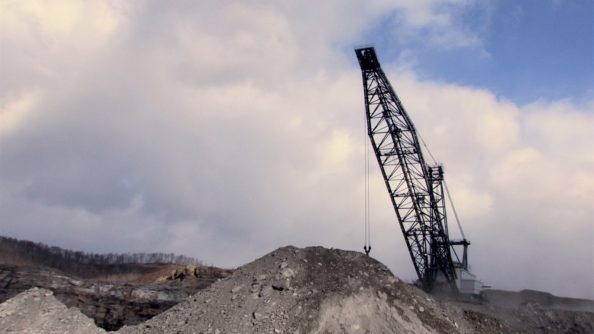 Mechanization and automation has idled thousands. “Appalachia is a shell of its former self…Parents are telling their children to go.” No less an authority than Jay Rockefeller is seen telling his audience, “It’s a disservice to coal miners and their families to pretend that things can be as they were.” Coal is a finite mineral and mining has been going on since the 1800s. Is it any wonder that now you have to go deeper and deeper into the ground to mine? Instead of even trying, mines have resorted to simply blowing off the tops of the mountains using explosives, which damages the environment and the topography of the state.
Mechanization and automation has idled thousands. “Appalachia is a shell of its former self…Parents are telling their children to go.” No less an authority than Jay Rockefeller is seen telling his audience, “It’s a disservice to coal miners and their families to pretend that things can be as they were.” Coal is a finite mineral and mining has been going on since the 1800s. Is it any wonder that now you have to go deeper and deeper into the ground to mine? Instead of even trying, mines have resorted to simply blowing off the tops of the mountains using explosives, which damages the environment and the topography of the state.
Despite the fighting words “Coal IS West Virginia,” coal mining is a dying industry. 80% of coal mines are owned by out-of-state corporations. Mines have destroyed 352,000 lush forested acres using explosives as of 2009. Wendell Berry is heard to say, “The global economy is built on the principle that one place can be destroyed for the benefit of another.” [What comes to mind is the Brazilian rain forest and attempts to save it, or the Arctic and attempts to ban drilling beneath the polar ice caps.]
In addition to silicosis (“black lung disease”) which has made the average miner’s life expectancy only 42 years of age, in Charleston, West Virginia, “They poisoned people’s water and commerce goes on.” The chemical MCHM used by Freedom Industries to process coal caused a Flint, Michigan, water situation (for different reasons) where water could not be consumed, used for washing, or considered safe in any way. Dr. Rahul Gupta, a medical director, is shown speaking to that issue, and Chris Hedges, an author, says, “They tried to make it appear to be an anomaly.” Nine counties were affected and a state of emergency was declared. Bottled water had to be delivered to anyone living in those nine counties.
Immediately thereafter, on January 17, 2014, Freedom Industries declared bankruptcy.
The declaring of bankruptcy is a common ploy used by unscrupulous coal companies to avoid having to pay reparations or retirement sums due or health care promised to workers when they began in the mines. It’s a bit like the plot of “The Producers” (i.e., Gene Wilder and Zero Mostel plan for a play to fail so they can use it as a tax write-off) where a mine is set up to fail and then bankruptcy can be declared, relieving the unscrupulous mining company of any obligations to the men who risked their lives underground mining the coal. Seven thousand coal mining jobs have been lost in West Virginia since 2011. In 2015, over 11,000 coal miners lost their jobs, according to “The Hill.”
“The Hill” goes on to attempt to blame the loss of coal mining jobs on federal regulations, but the truth is much more complicated.
To wit:
- China is trying to clean up its pollution problem, so the Asian demand for coal from places like West Virginia did not measure up to expectations.
- Clean, renewable energy sources are cutting into the concept of coal as king. Natural gas, for one, is cheaper and the head of Exxon is all for using natural gas rather than coal for power. In fact, the day the Paris Climate Control Pact took effect, the head of Exxon announced his support for the climate initiatives the Paris act endorsed, which included cutting back on coal to eliminate pollution and global warming.
- Although Donald Trump hates wind turbines because they clutter his Scottish golf course view and kill birds, Obama supported wind and solar efforts, and, even in the coal state of Illinois where I live (Illinois is 5th in coal production), the nuclear power plant in Cordova (IL) recently received a death sentence reprieve from Republican Governor Bruce Rauner which is good for the next decade, despite consistently losing money operating it.
- If the demand for coal were still high, eastern states have cleaner coal and it is easier to get Eastern coal to market.
- Australia also is capable of producing coal for export.
- Mechanization and automation, mentioned previously, have cut into the need for coal miners.
- Changes in how coal is extracted also reduces the demand for coal mining positions.
THE BAD
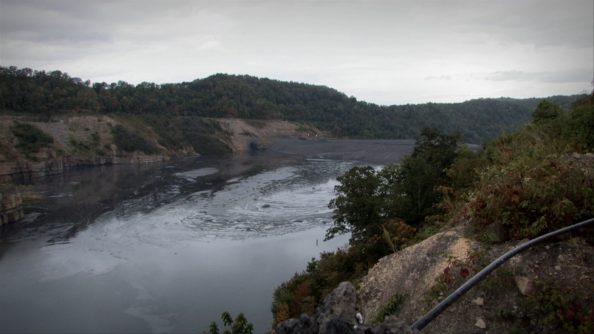 Blood on the Mountain is a documentary with a point of view and those who do not accept climate change and global warming as fact will dispute its point-of-view. It also did not address the life-and-death struggle in the halls of Congress ongoing in December of 2016 to help save miners’ pensions and retirement benefits, gutted by unscrupulous companies who do not believe that promises should be honored. There is footage of a UMWA rally in September in Washington, D.C. regarding Senate Bill #1714, the Miners’ Protection Act.
Blood on the Mountain is a documentary with a point of view and those who do not accept climate change and global warming as fact will dispute its point-of-view. It also did not address the life-and-death struggle in the halls of Congress ongoing in December of 2016 to help save miners’ pensions and retirement benefits, gutted by unscrupulous companies who do not believe that promises should be honored. There is footage of a UMWA rally in September in Washington, D.C. regarding Senate Bill #1714, the Miners’ Protection Act.
After a huge coal miners’ strike in 1946, Harry Truman nationalized the mines and, in order to end the strike, hammered out a deal with UMWA President John Lewis and Interior Secretary Julius Krug that would guarantee coal miners certain benefits, like pensions and health care. That, to the miners and the UMWA, is the promise made that should be kept, but there are those who argue that the promise was not forever and not the government’s responsibility.
If you accept the premise that coal mining is a dinosaur industry that is dying a slow, tortuous death, quotes like this one from Jeremy Nichols, spokesman and director of climate and energy for Wild Earth Guardians are incendiary. When asked about the plight of coal miners in West Virginia (and elsewhere) Nichols said, “My initial response is tough shit…Keep it in the ground.” There is an obvious disconnect between the blue collar miners and the college-educated environmentalists who they see as a threat to their livelihood—even though the threats are far more wide-ranging.
The Wild Earth Guardians brought a suit in 2013 that threatened to shut down Colowyo and Trapper mines in Colorado, saying that the environment was “inadequately protected under the National Environmental Policy Act.” The mines were sued by the United States Office of Surface Mining.
Headlines in primarily Republican organs (“The Hill” was one) read: “Happy Birthday Clean Power Plan, Thanks for the Job Losses and Billions in Costs.” Another read: “Clean Power Plan: All Pain, No Gain for West Virginia” (The Hill). The same source made the dire prediction of 24,000 coal mining jobs displaced by the year 2020 blaming it all on EPA regulations and cited rising cost for electricity if coal were cut out of the power equation.
But the truth is that MANY factors play into the fall of coal as a power player. It is NOT just EPA guidelines that have put coal miners in the position of losing their pensions and their health care by Dec. 31, 2016.
The UMWA pension system is irreparably broken. No union members to pay in; no union money to pay out. “The looming insolvency is due to the precipitous drop in demand for coal in recent years…” say the experts. Union busting mine owners helped destroy the organization that had fought for workers at the turn of the century, and that began in earnest in 1984.
TODAY:
December 5, 2016: Senate Democrats staged a last-ditch attempt to pass a stop-gap measure for miners who face the loss of their pensions and health care NOW (i.e., Dec. 31, 2016). Senate Bill #1714, the Miners Protection Act, was co-sponsored by Virginia senator Tim Kaine and it passed out of committee 18 to 8, with 8 Republican Senators voting with the Democrats to take millions earmarked for the cleaning up of abandoned mines and put it into a fund for displaced and retiring mine workers. Republicans who crossed party lines to vote for the bill included Orrin Hatch (R, Utah), Mike Crapo (R, Idaho), Pat Roberts (R, Kansas), Richard Burr (R, NC), Rob Portman (R, Ohio) and Pat Toomey (R, PA). Saying “Congress, in my view, has an obligation to the Miners Protection Act” this group tried to bring the bill to the Senate floor for a vote. But House Republican Majority Leader Mitch McConnell, who has no love for the UMWA or President Obama, refused to allow a vote. (*Note: McConnell’s wife was just named Secretary of Transportation.)
Meanwhile, a variety of mining companies (Peabody, Freedom, Alpha Natural Resources) continue to file for bankruptcy and the courts have relieved the bankrupt companies of their obligation to pay retiree benefits. All of this hits home here in the Rust Belt when I think of the waning days of International Harvester, which went under and took many pensions with it.
Let’s also not forget how we all suffered in 2008 when the economy nearly collapsed and was rescued only in the nick of time by the stewardship of the incoming administration. Pension funds—like all of ours—took a hit then, too.
He’s not in the Blood on the Mountain, but Joe Stowers, age 72, from DuQuoin, Illinois, a retired miner who worked 28 years, is thinking of coming out of retirement to try to find a job because, as many who were interviewed for “Blood on the Mountain” said, “I thought my tomorrow was safe. Apparently, it’s an entirely different story.” As of October 5th in a letter sent to 12,500 union members, Peabody Energy, Arch Coal, Patriot Coal, have all told their union employees that their health care coverage will be lost on December 31, 2016 unless Congress acts. Following on the heels of those three companies are Walter Energy and Alpha National Resources, who have sent out letters announcing similar losses to miners in March and July of 2017.
In a December 9, 2016 article in Mother Jones, Katie Herzog wrote: “President elect Trump campaigned on bringing back those same coal miners’ jobs, through sorcery, perhaps. Someone is working to help miners, but it ain’t Trump—or many Republicans, for that matter.”
One coal miner quoted in this truly grim-but-important film says, “We’re like lepers. Put us in a colony and let us die off. We’re not losing it (the land); we’re sacrificing it for the good of mankind and we’re sick of it.”
-
Acting - 10/10
10/10
-
Cinematography - 10/10
10/10
-
Plot/Screenplay - 10/10
10/10
-
Setting/Theme - 10/10
10/10
-
Buyability - 9/10
9/10
-
Recyclability - 8/10
8/10
